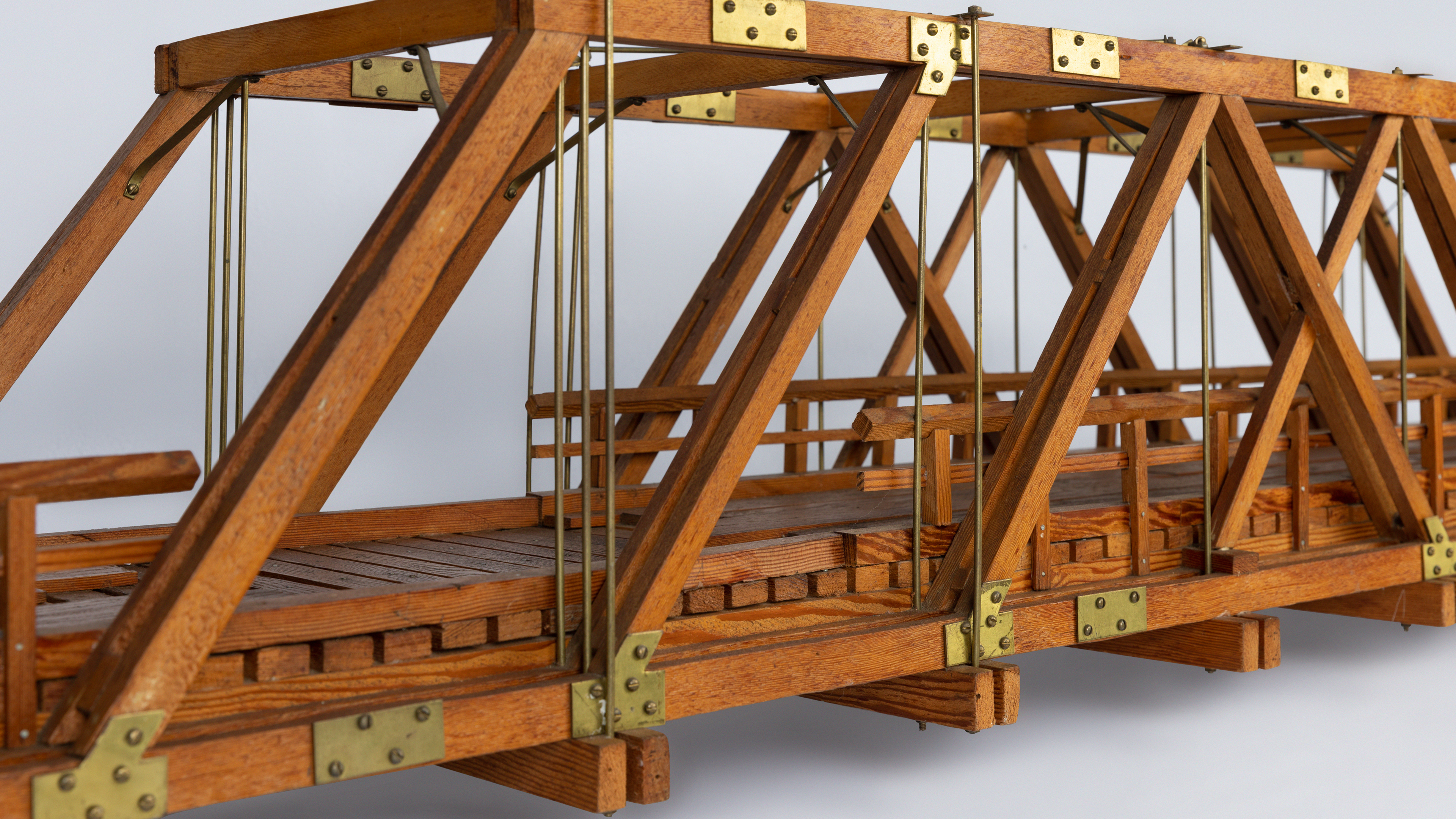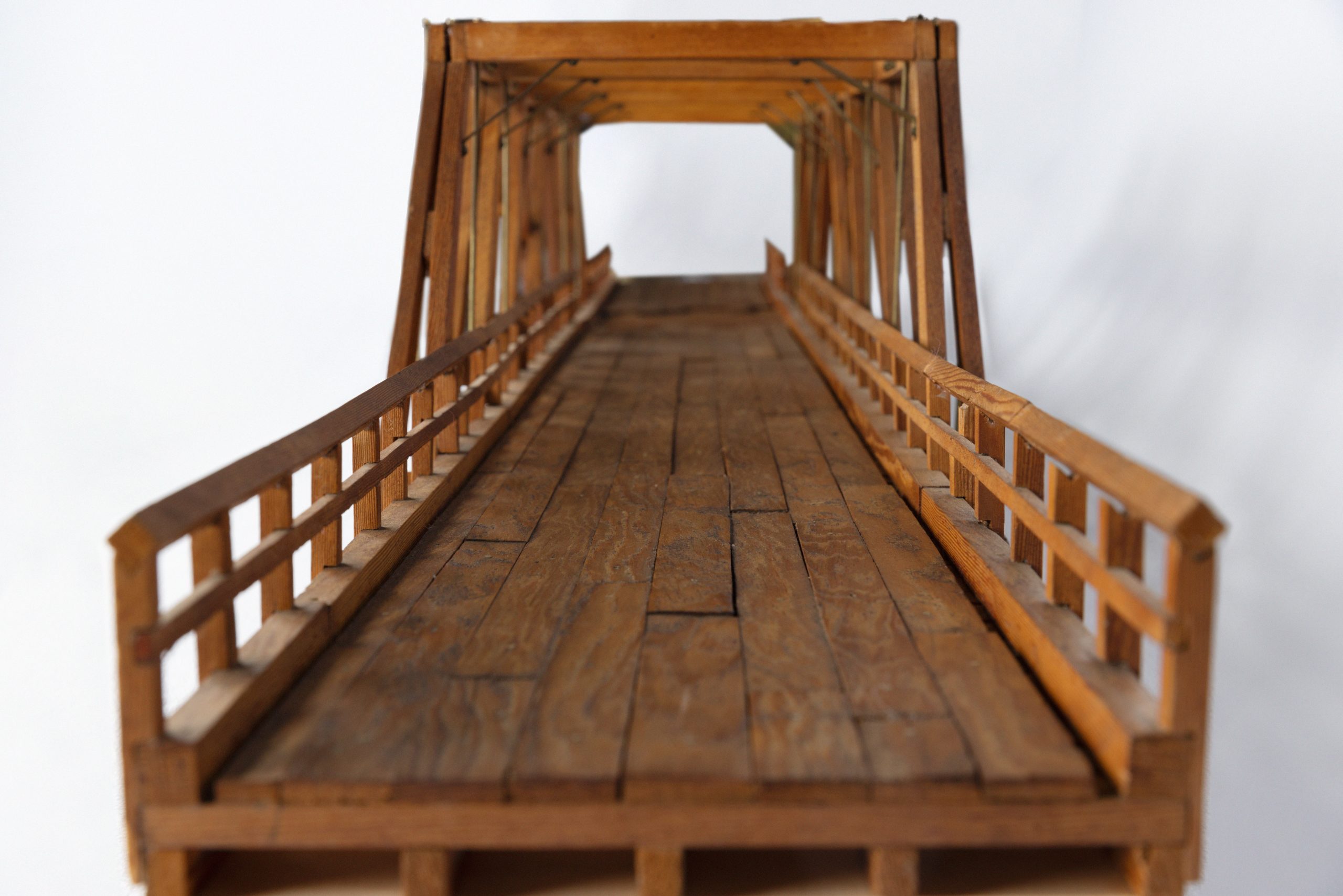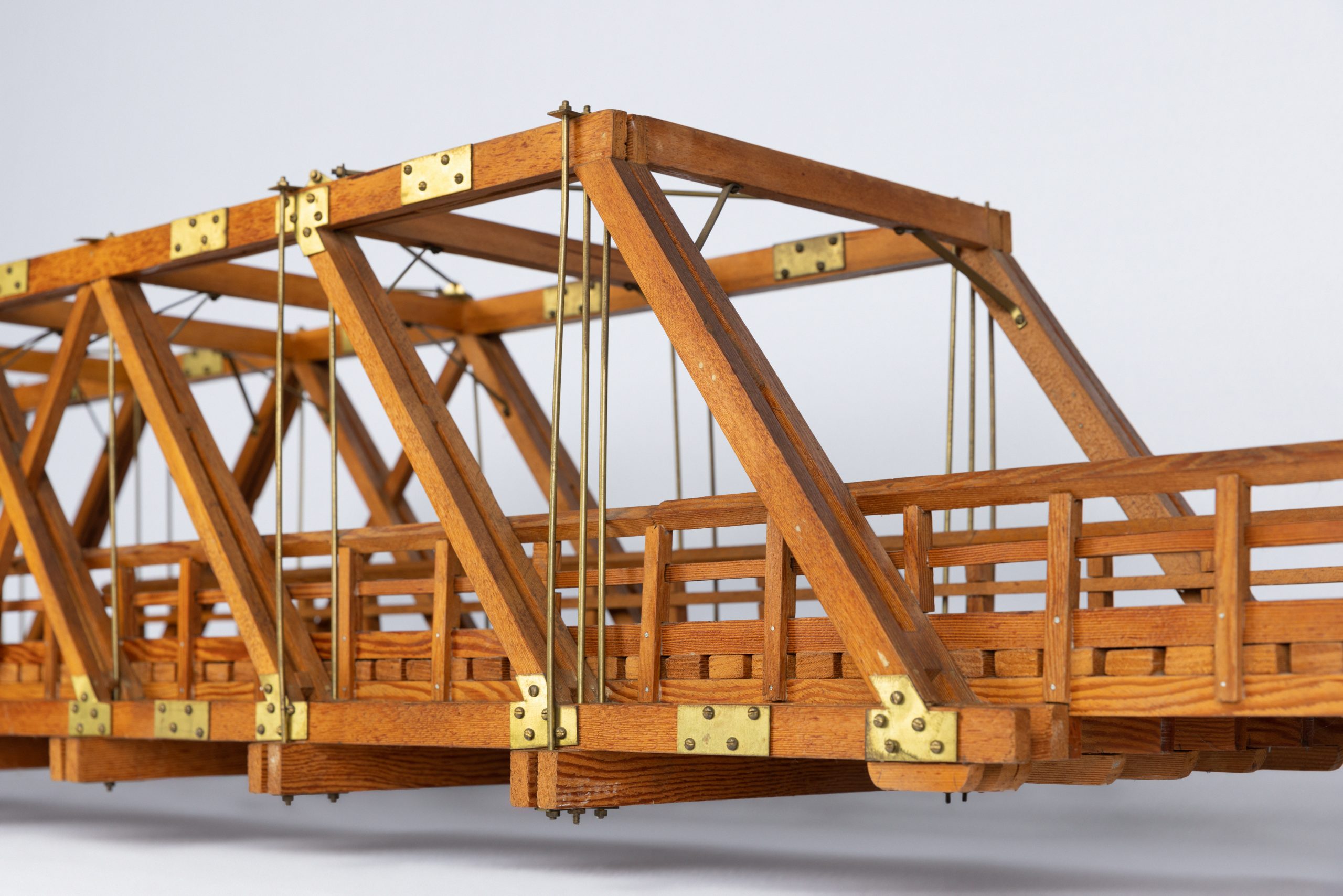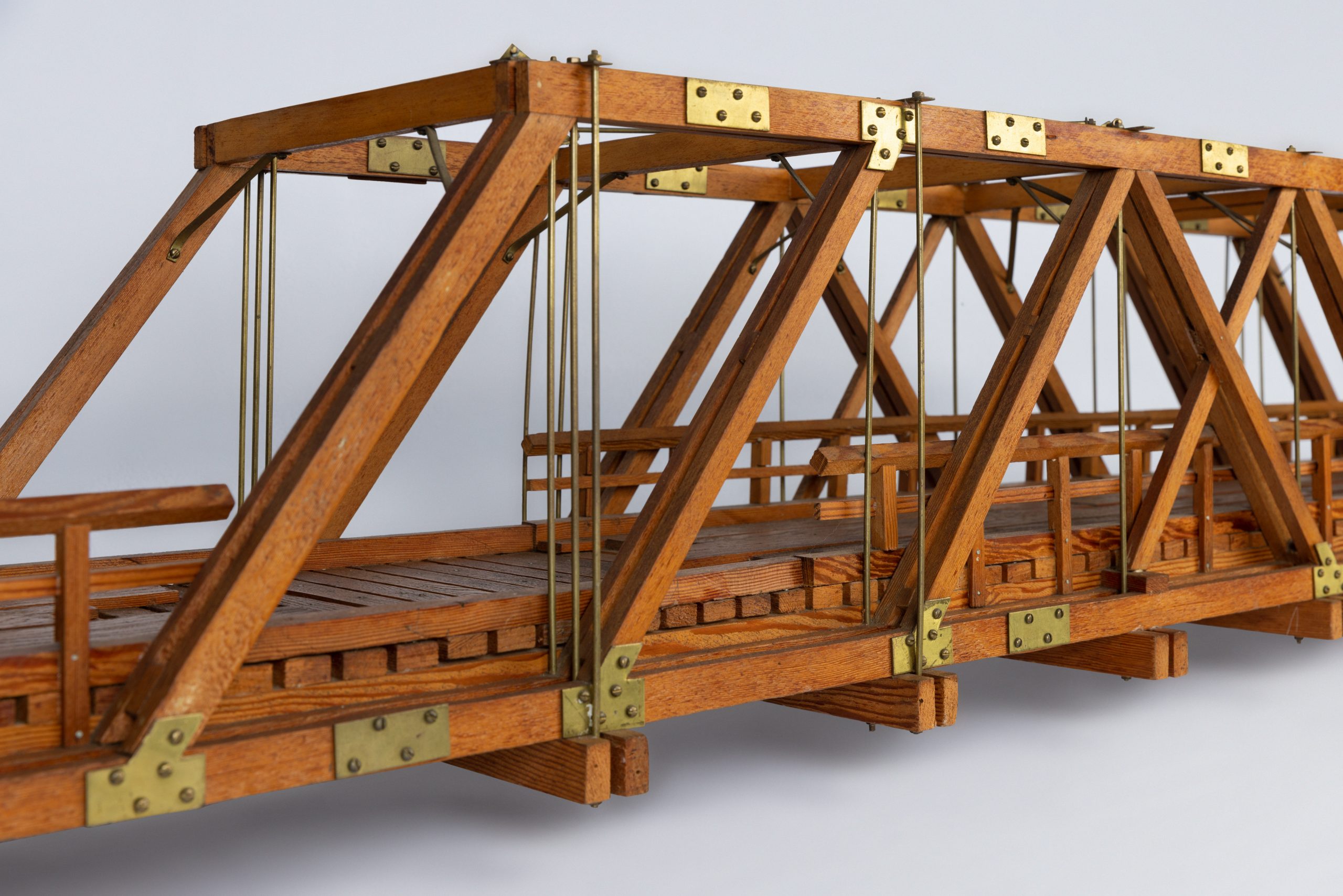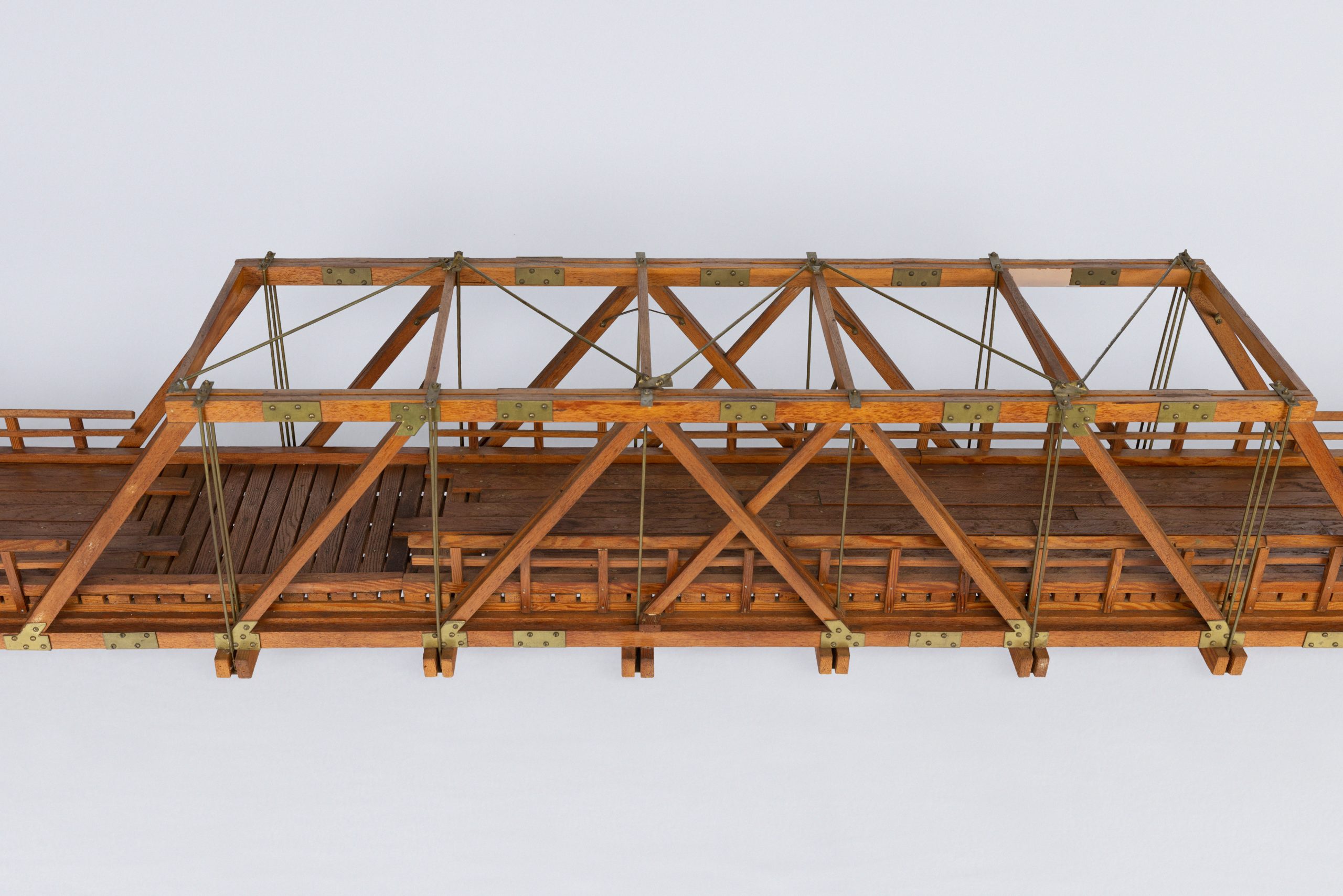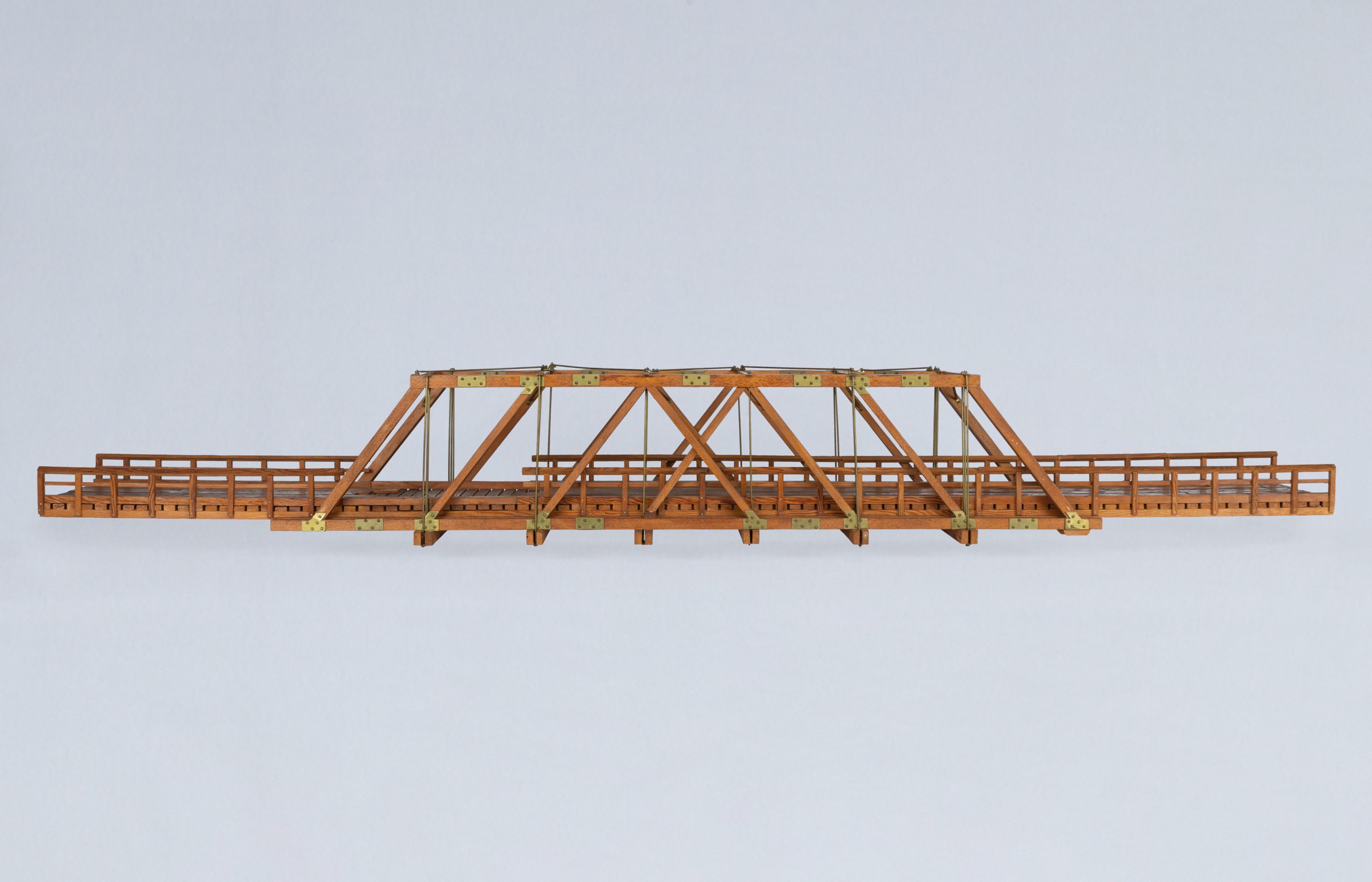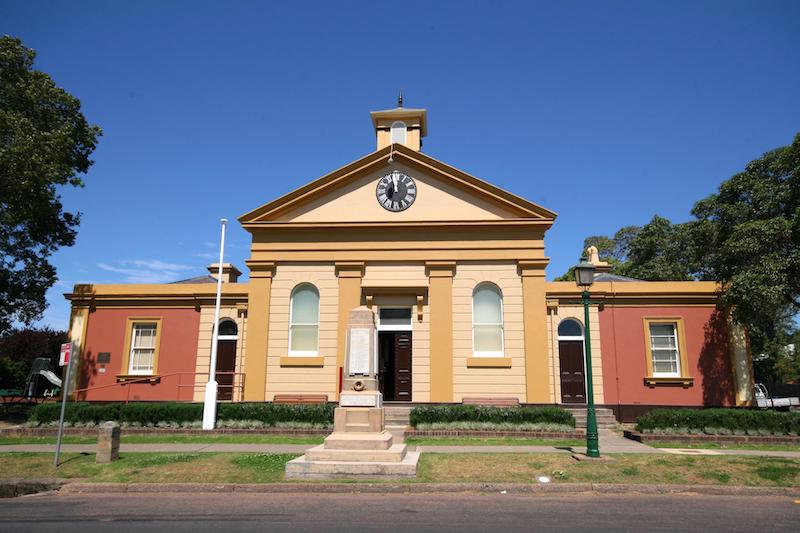Pieces and Patience
Morpeth’s Important Bridge Modelled in Miniature
How many pieces of wood does it take to build a miniature bridge? How many hours, and how much patience? With its clever system of interconnected triangles and cast-iron joints, this 1:25 exact scale model of one of the three spans of the Morpeth bridge was expertly and painstakingly pieced together by Michael Deguara. A construction and carpentry student at the Newcastle Technical College in the 1980s, he presented it to the people of Maitland and Morpeth for the Australian Bicentenary in 1988.
From the 1840s, when the ships of the Hunter River Steam Navigation Company began plying the Hunter River to and from Newcastle, Morpeth became a busy river port, transporting people and goods in and out of the Hunter Valley. As the river traffic increased and the population expanded, Morpeth needed a more efficient river crossing than the punt, which was often on the opposite side of the river when people wanted to cross.
In 1896 Samuel McGill and his brothers won the contract to begin construction of a bridge at Morpeth. When complete in 1898, horse carts and wagons and, later, cars, vans and utes, began rattling over the bridge’s wooden boards, to travel between Morpeth on the southern riverbank and properties and towns to the north.
The Morpeth Bridge is now the oldest surviving example of an overhead braced Allan truss road bridge in NSW, designed in 1893, by Percy Allan of the NSW Department of Public Works. Allan’s innovations reduced construction costs and maintenance, allowing the construction of 583 bridges that opened up the road network across NSW.


